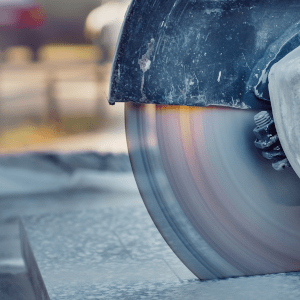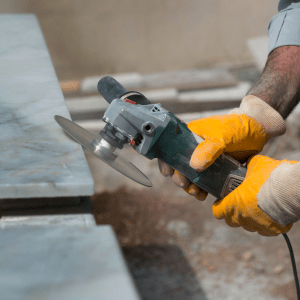 The Occupational Safety and Health Administration (OSHA) has established a Personal Exposure Limit for silica dust of 50 micrograms per cubic meter of air, on average, over an eight hour workday.
The Occupational Safety and Health Administration (OSHA) has established a Personal Exposure Limit for silica dust of 50 micrograms per cubic meter of air, on average, over an eight hour workday.
This limit has been established because silica dust exposure has been linked with silicosis, an incurable, often fatal lung disease.
Workers in the stone fabrication industry are especially vulnerable to developing silicosis due to silica exposure: Cal/OSHA recently estimated that about 500 to 850 current stone fabrication shop workers in California will probably develop the disease, with about 90 to 160 of them likely dying from the disease.
Call us today for a free consultation if you or a loved one developed silicosis from working in the stone fabrication industry. You may be eligible for financial compensation. We will not charge you a a fee until or unless we recover money to compensate you for your silicosis.
The Dangers of Silica Dust Exposure
Respirable crystalline silica exposure has been linked with:
- Silicosis
- Chronic obstructive pulmonary disease
- Lung cancer
- Autoimmune disease
- Kidney disease
Chronic silicosis usually develops after 10 years or more of occupational exposure to silica dust. However, heavy exposure to crystalline silica particles can compromise lung function, causing the disease to develop much faster.
Silica-related diseases such as silicosis can progress or develop even after exposure in the workplace has stopped.
The people at the highest risk of developing lung diseases after inhaling silica dust are workers in the stone fabrication industry, especially those who work with artificial stone, which contains far more silica than natural stone.
Measuring Silica Dust Exposure
 There are ways to measure the amount of various types of silica dust, such as crystalline silica and amorphous silica, in the air. These monitoring methods are important because exposure to respirable crystalline silica can damage lung tissue and lead to the workers exposed developing lung cancer or silicosis.
There are ways to measure the amount of various types of silica dust, such as crystalline silica and amorphous silica, in the air. These monitoring methods are important because exposure to respirable crystalline silica can damage lung tissue and lead to the workers exposed developing lung cancer or silicosis.
These methods include:
Parallel Particle Impactor Cartridges
These are connected to calibrated sampling pumps which collect air from an operator’s breathing zone. These cartridges are relatively unlikely to produce skewed results since they aren’t affected by their position. Once samples have been collected, the cartridges are sent to laboratories for analysis.
Gravimetric Samplers
These samplers work due to weight. Contaminants are collected on filters, which are weighed prior to and after sampling. The difference in weight is the estimated amount of contamination. These filters are very accurate but they are expensive and their use is time-consuming.
Real-Time Samplers
These samplers are affordable and can measure airborne contaminants on-the-spot. However, they are not as accurate as gravimetric samplers.
Preventing Exposure to Silica Dust
The most preferable way to prevent exposure to silica dust is to reduce or eliminate the silica content.
Next most preferable would be engineering out exposure by using a vacuum tool or local exhaust system, wet-cutting, and/or isolation of the dust source.
Next most preferable would be using work practice and administrative controls, like working in ways which reduce dust generation and limiting exposure time.
Next most preferable would be personal protective equipment usage, like respirators, as well as coveralls which keep dust off of clothes which are worn home. Respirators will be necessary when exposure levels aren’t reduced adequately by other means.
Can Your Body Get Rid of Silica Dust?
The human body is capable of getting rid of some of the dust it inhales. However, when people work in jobs where they are exposed to large amounts of dust over a long period of time, or where they work with products that contain large amounts of silica, then their lungs get overwhelmed. Because of this, their lungs can’t rid themselves of all the silica dust, the silica dust accumulates, and silicosis can be the result.
How Common is Non-Occupational Exposure to Silica Dust?
It is quite uncommon for dangerous side effects to result from non-occupational exposure to silica dust. The people who need to be the most worried about silica exposure are workers in stonetop, concrete and other-related industries.
A 2012 study found that the levels of silica dust in the air in “in control localities away from” industries which produce silica dust were under limits the researchers considered to represent a reasonable air quality standard.
When To Contact a Silicosis Attorney
 If you have developed silicosis after working in the stone fabrication industry, you should contact us today for a free consultation. We have been representing hazardous exposure victims, such as those exposed to asbestos, since 1990, having recovered over 0,000,000 for clients.
If you have developed silicosis after working in the stone fabrication industry, you should contact us today for a free consultation. We have been representing hazardous exposure victims, such as those exposed to asbestos, since 1990, having recovered over 0,000,000 for clients.
Our vast experience in handling hazardous exposure cases will allow us to recover the maximum possible compensation for you.
Remember, we don’t charge a fee until and unless we recover compensation for you.
Call us today for a free consultation.

